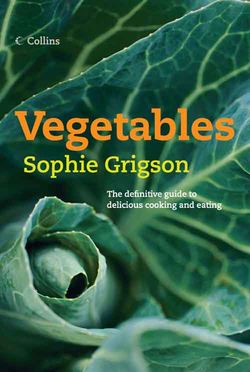Читать книгу Vegetables - Sophie Grigson, Sophie Grigson - Страница 38
Practicalities BUYING
ОглавлениеMuch of what follows will be well known to anyone who cooks or eats, but read on if you have time, for hidden away amongst the general knowledge you may find a few useful hints.
More and more, in farm shops and the few remaining specialist greengrocers, sellers are having the courtesy to let us know the varietal name of the potatoes they sell. This is a good thing, and supermarkets have done their best to emulate it. Why shouldn’t we choose potatoes in the way that we choose apples? Sure, we may not be able to hold the specific attributes of ten different types of potato in our head at all times, but there’s pleasure to be had in stumbling across a favoured variety, that we know tastes good, and pleasure to be had in discovering that whilst one variety is fluffy and dry fleshed, another is smoother and waxier and has a distinct undertone of almonds.
Broadly speaking potatoes fall into two main categories, each more suited to certain styles of cooking than others. The dominant category is that of the maincrop potatoes, larger to very large, with a drier, mealy flesh, in season from late summer onwards into the cold months. Smaller but highly valued are the waxy potatoes, a group that includes junior new potatoes as well as what are known as ‘salad potatoes’ which retain their dense waxy texture right into maturity. The rightful season of the new potato is from late spring through to midsummer by which time they are tipping from adolescence into maincrop adulthood. Salad potatoes are harvested later, from maybe July on into the autumn.
Of course, these seasons for potatoes are now all but obliterated. Modern farming methods, imports and long storage mean that we can and do enjoy any sort of potato at any time of the year. And yet…there is a natural harmony (as always) in the old-fangled seasons. In winter we crave all those warm, caressing comfort dishes that can only be made with maincrop potatoes – steaming jacket potatoes, creamy mash, crisp-coated roasties or finger-burning fresh-fried chips. Then as the ground warms, food lightens and new and salad potatoes are in the ascendant, so exactly right with a piece of poached salmon, or grilled chicken breast, or thick slices of ham with a zesty salad. Nothing then supersedes the rightness of a good potato salad, critical side dish at a barbecue, on a picnic and at a summer wedding.
Choosing the right potato for the job in hand is important, although all rules are made to be broken. Just get to know them first, before you attempt flagrant breaches. In other words use chunky maincrop potatoes for: baking, mashing, boiling, roasting, deep-frying, sautéing, adding to doughs to lighten them (e.g. in potato bread, or potato scones), gratins and so on. Save new potatoes for: boiling, salads, sautéing, gratins, and roasting whole. Yes, there are overlaps, but the results will differ with the potato variety used.
I’ve had to concede, reluctantly, that my mother was right when she insisted that one should always buy dirty potatoes. A thin jacket of dried-on muck does indeed seem to preserve flavour to some extent. Not critical, but a bonus if you are prepared to spend a couple of extra minutes at the sink scrubbing them clean. Dirt or no dirt, glance over potatoes as you pick them out to ensure that they are free from bruised machinery gashes, mouldering patches (a sign of poor storage), sprouting shoots, and above all patches of green. That charming green coloration tells you that the potatoes have been exposed to light for too long, thus developing poisonous toxins. Not a good thing.
Maincrop and salad potatoes can be kept for some time in the right conditions (a dark, cool, dry place) but new potatoes have a short shelf life. Eat them within a few days of purchase to enjoy them at their best. Don’t leave either sort of potato in a closed plastic bag for any longer than is necessary – moisture will gather in its folds, and sooner or later your potatoes will start to rot.
Don’t keep potatoes in the fridge, or at least not for more than a day or two. In the icy claustrophobic atmosphere, the starches in the potato mutate into sugars, which, while not cataclysmic, is not really appropriate for most potato dishes.
